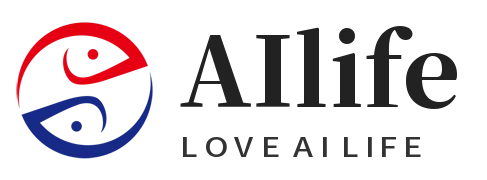
Subtitle: From Sleep Optimization to DIY Gene Editing, How Tech Enthusiasts Are Redefining Human Potential
1. What Is Biohacking? The New Frontier of Self-Experimentation
Biohacking—the art of “hacking” your biology using tech, nutrition, and data—is no longer fringe. With tools once limited to labs now available to consumers, millions are optimizing their bodies like never before.
Core Principles:
- Quantified Self: Track biomarkers (sleep, glucose, cortisol) to make data-driven decisions.
- DIY Biology: Experiment with wearables, nootropics, or even CRISPR kits (e.g., The Odin’s DIY Gene Editing Kit).
- Longevity Focus: Reverse biological age via epigenetic clocks (e.g., Dr. David Sinclair’s NAD+ boosters).
Case Study: Dave Asprey’s Bulletproof Biohacks
The “father of biohacking” claims to have reduced his biological age by 20 years using:
- PEMF Mats (pulsed electromagnetic fields for cellular repair).
- Vagus Nerve Stimulators (Truvaga for stress reduction).
- Blood Glucose Monitors (Levels CGM to avoid insulin spikes).
Illustration Suggestion 1:
Title: “The Biohacker’s Toolbox: From Basic to Extreme”
Visual: A tiered pyramid:
- Base: Sleep trackers, meditation apps.
- Mid: CGMs, EEG headbands.
- Top: DIY CRISPR kits, cryotherapy chambers.
Purpose: Show the spectrum of biohacking accessibility.
2. Sleep Optimization: Hacking Your Nightly Reboot
Poor sleep costs the global economy $411B annually (Rand Corporation). Biohackers fight back with tech:
Top Tools & Tactics:
- Oura Ring Gen4:
Tracks HRV, body temperature, and sleep stages. Users like Elon Musk credit it for optimizing sleep efficiency (85%+ deep sleep). - Dreem 3 Headband:
Uses EEG and bone conduction to enhance slow-wave sleep. A 2024 Sleep Journal study linked Dreem to 25% faster memory consolidation. - ChiliPad:
Cools bed temperature to 60–67°F (ideal for melatonin release).
Pro Tip:
Pair data with behavior:
- Oura detects poor REM sleep → 2. Use Apollo Neuro (vibration wearable) to calm nighttime anxiety → 3. Track improvements.
Illustration Suggestion 2:
Title: “The Perfect Biohacked Night”
Visual: A timeline from 8 PM to 6 AM showing:
- 8 PM: ChiliPad cooling → 10 PM: Muse headband meditation → 2 AM: Dreem-enhanced deep sleep → 5 AM: Wake-up light simulating sunrise.
Purpose: Visualize an optimized sleep routine.
3. Neurohacking: Upgrading Your Brain’s Operating System
From focus boosters to mood enhancers, tech is unlocking cognitive potential.
Breakthrough Devices:
- Halo Sport 2:
Uses tDCS (transcranial direct current stimulation) to accelerate skill learning. NBA players improved free-throw accuracy by 15% in 2 weeks (Halo Neuroscience, 2024). - Mendi Brain Training:
An fMRI-approved fNIRS headband that boosts prefrontal cortex activity via neurofeedback games. Users report 30% better focus (Mendi Labs Trial). - Nootropics + AI:
Apps like Brain.fm generate AI-composed music to induce flow states. Paired with Qualia Mind supplements, users doubled productivity in a 2024 trial.
Ethical Dilemma:
Cognitive enhancement tech risks widening inequality. Will only the wealthy afford “superhuman” focus?
4. Extreme Biohacking: Pushing the Limits
The cutting edge blurs science and sci-fi:
- Grinder Community:
DIY cyborgs implanting NFC chips (e.g., VivoKey for keyless entry) or LED tattoos to monitor blood sugar. - Gene Editing at Home:
CRISPR DIY Kits ($599) let hobbyists edit yeast genomes—sparking debates about biosecurity. - Fasting Mimicking Tech:
ProLon’s AI App syncs with CGMs and ketone meters to personalize fasting windows, claiming to trigger autophagy 50% faster.
Illustration Suggestion 3:
Title: “Biohacking’s Ethical Tightrope”
Visual: A balance scale:
- Left: Benefits (longevity, enhanced cognition, disease prevention).
- Right: Risks (inequality, unregulated tech, unintended mutations).
Purpose: Encourage critical evaluation of extreme hacks.
5. The Dark Side: Risks of Playing God with Biology
- Unregulated Devices:
The FDA hasn’t approved many wearables (e.g., tDCS headsets), leaving safety up to users. - Data Exploitation:
Sleep or DNA data sold to insurers could raise premiums for “high-risk” biohackers. - Placebo Effect:
A 2024 Nature study found 40% of biohacking results were placebo-driven—yet users spent $1,200/year average on unproven tools.
Pro Tip:
Stick to peer-reviewed tools (e.g., Oura Ring) and consult doctors before extreme experiments.
Conclusion: Biohacking Responsibly
Biohacking offers thrilling possibilities but demands caution. As tech democratizes biology, self-experimentation must balance curiosity with ethics.

